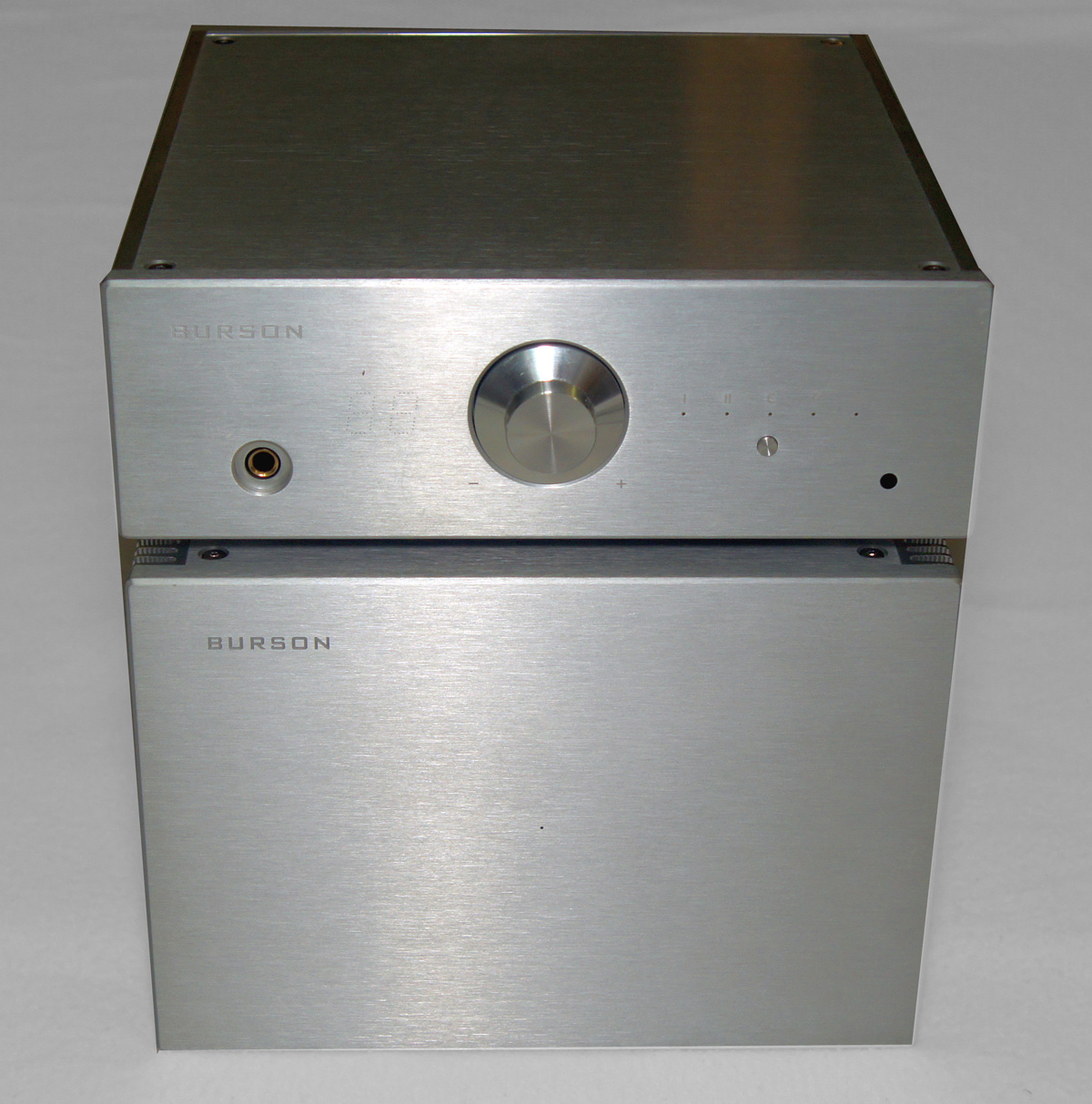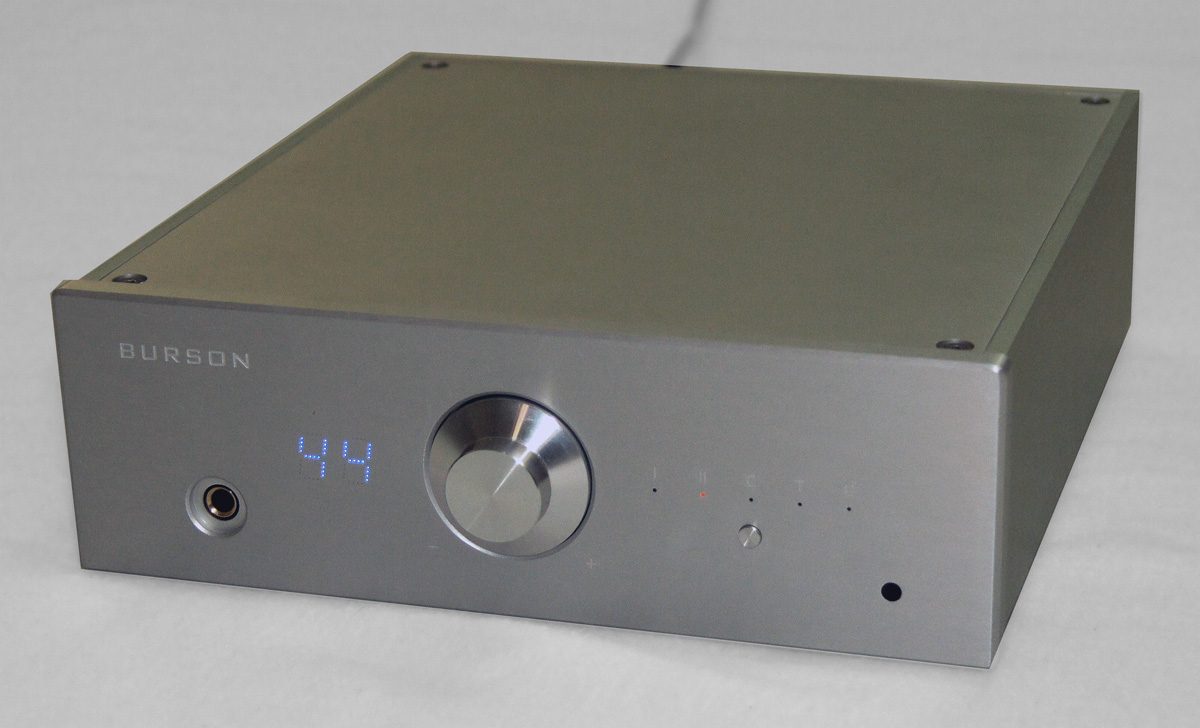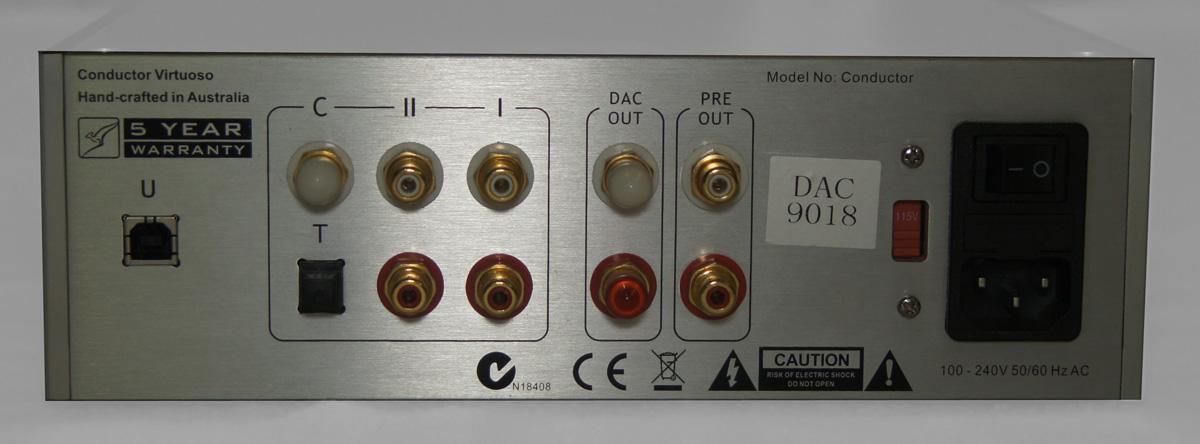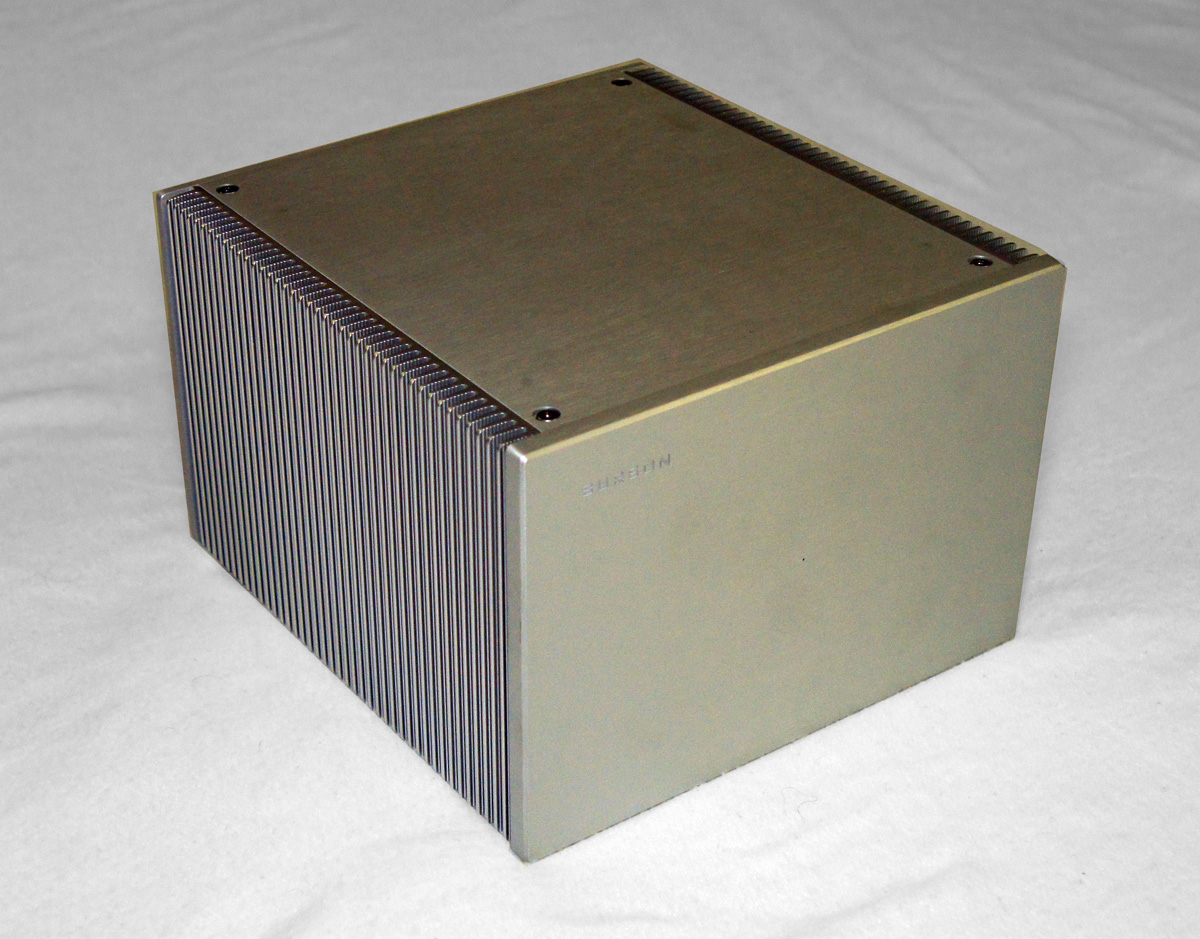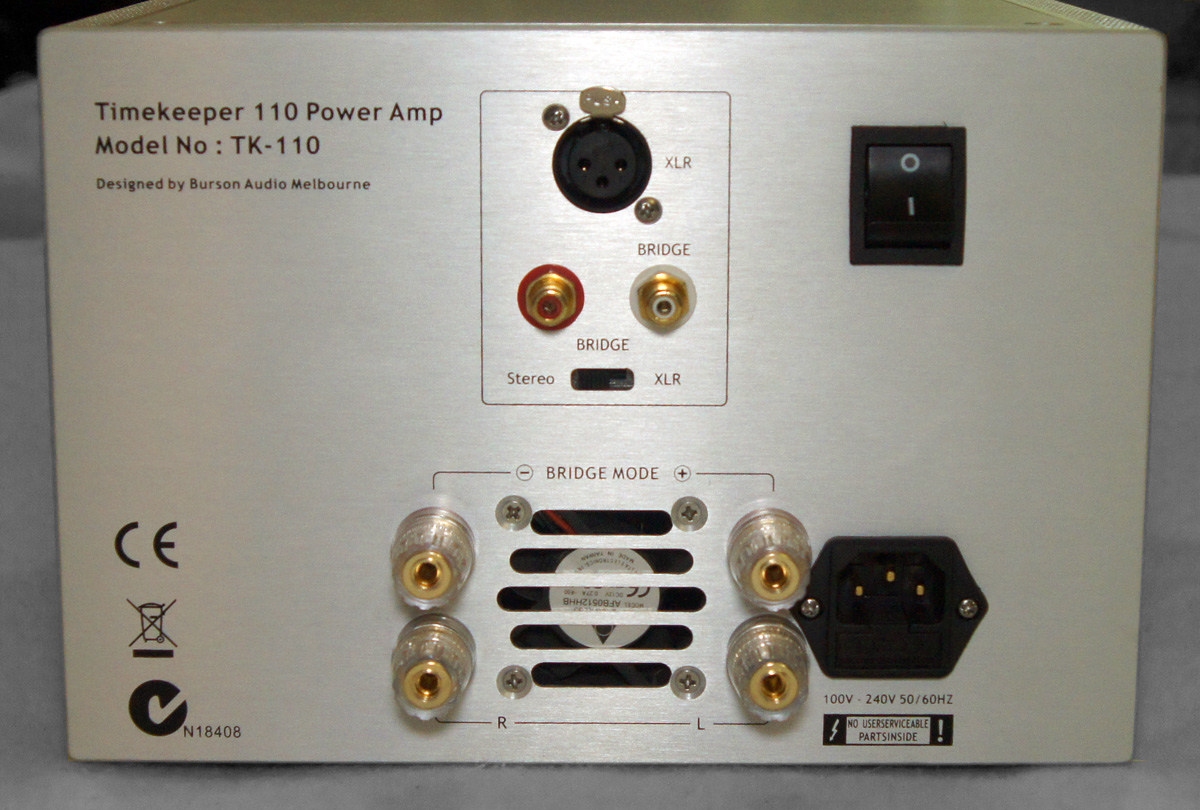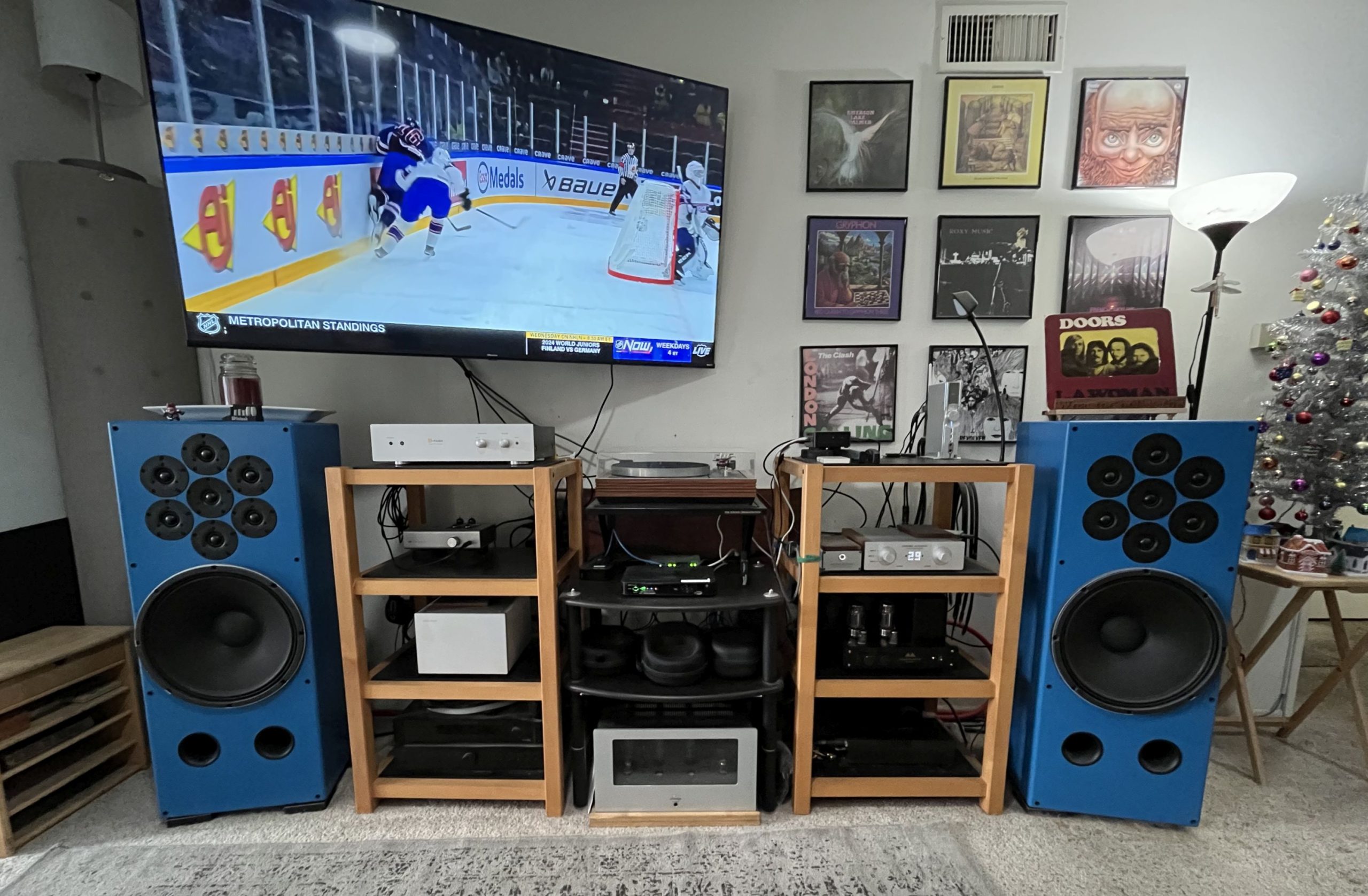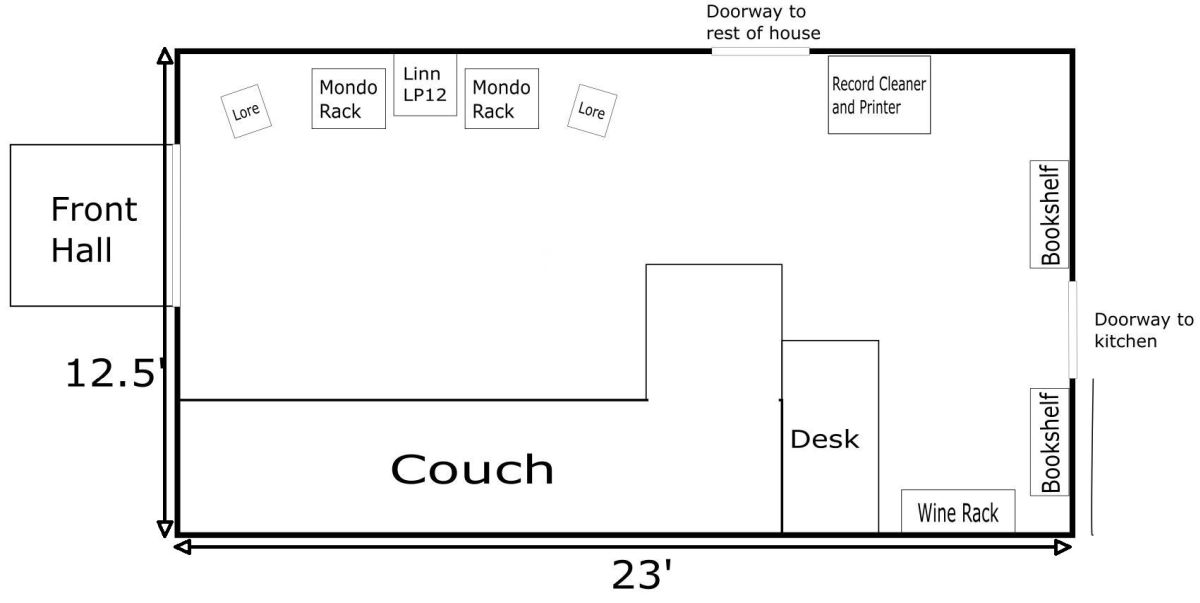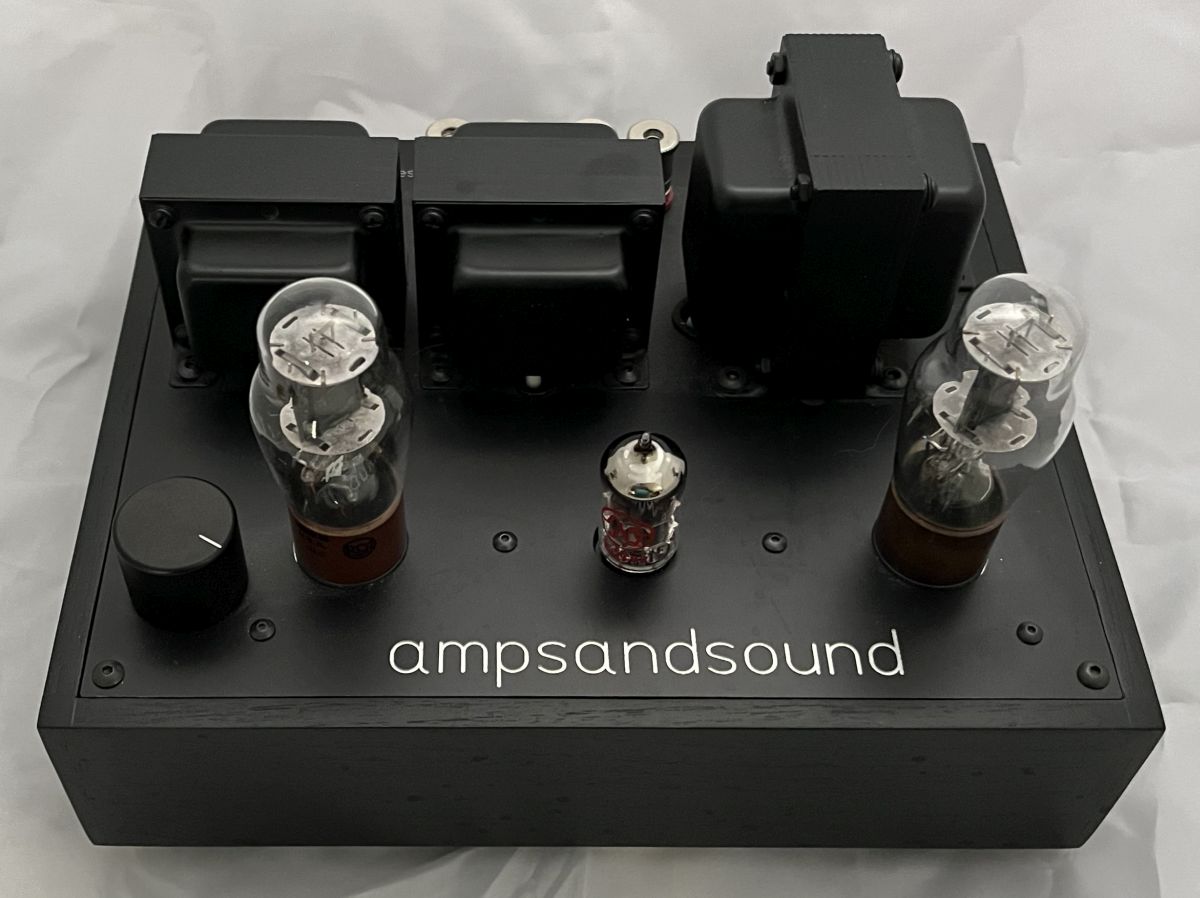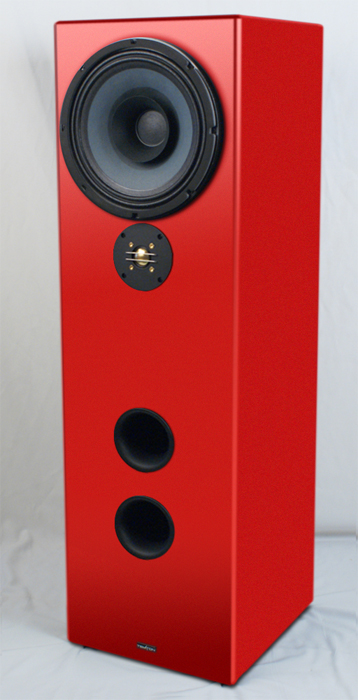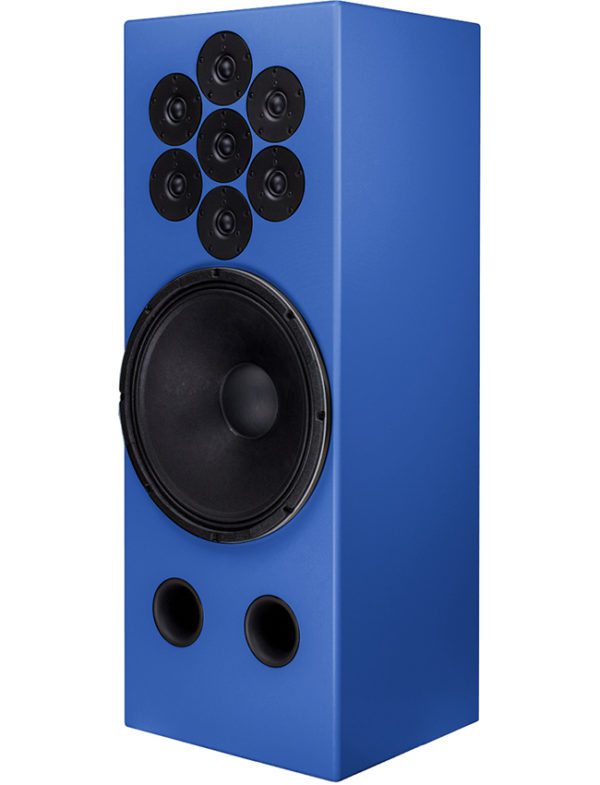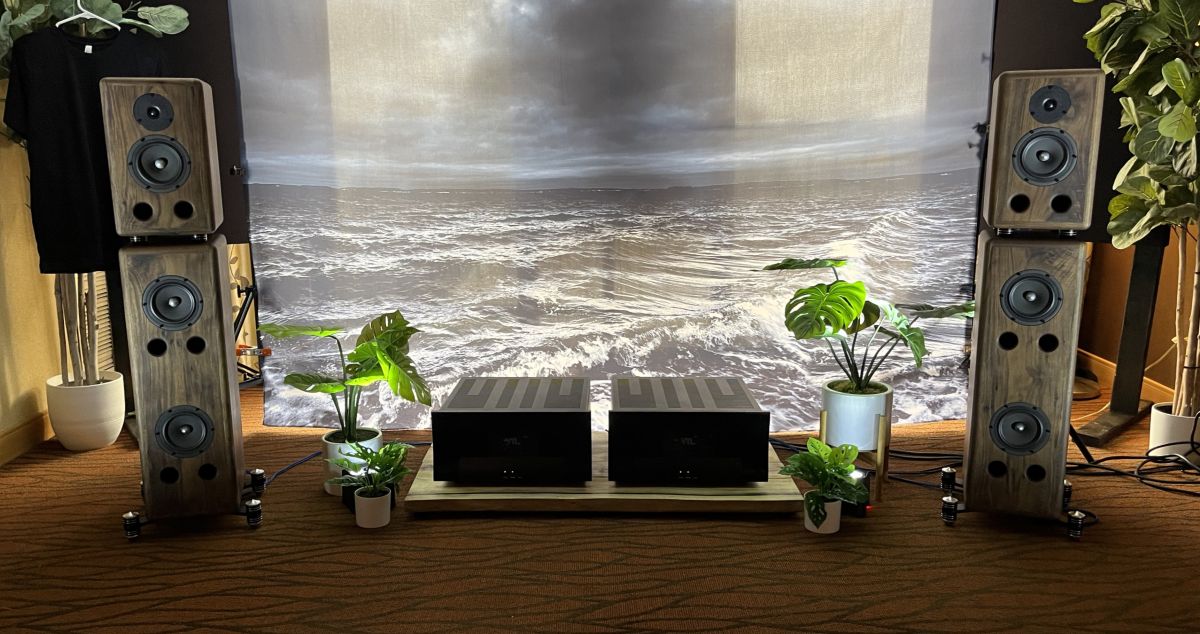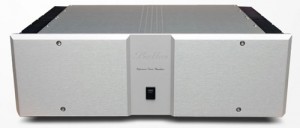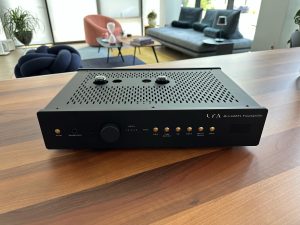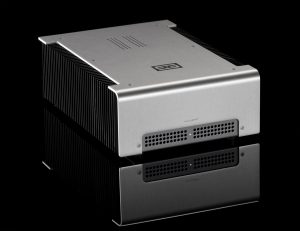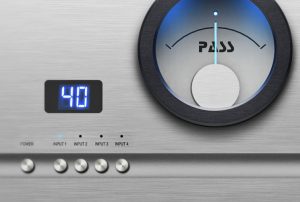There's been a long, and I think unfortunate trend in the upper reaches of high-end audio over the last fifteen years or so. It is the moving of high end audio from an endeavor based on making gear whose principle raison d'être is to sound really good and to honor the music we listen to, into the luxury lifestyle High End audio where expense, pride of ownership, and exclusivity seems as important, if not more so, as ultimate sound quality. When you see a product where the outer case seems to be as expensive as, or more elaborate than the parts inside, you know what I'm talking about. Just look at the proliferation of products with six figure price tags these days, and ask yourself, what's the real reason behind those prices?
Fortunately there are still some companies that work towards putting out very high quality products without focusing on the crowd that buys Ferraris or Rolls Royces or A. Lange & Söhne watches. From what I have seen over the past several months of use, Australia's Burson Audio is one such company.
Burson Audio has been around for over twenty years, and focuses on high quality solid state components using, discrete circuitry instead of ICs or OpAmps. They have a lengthy section about their philosophy on their web site, explaining both why they prefer discrete circuits, and what they feel is wrong with ICs (and Class D, too). I tend not to focus on the technology behind various products, but Burson's reasoning behind their designs seems very sold.
I have spent the past several months using both the Burson Audio Conductor Virtuoso (original version) preamp/DAC/Headphone amp and their Timekeeper Virtuoso power amp in my system. I looked at them both from an individual standpoint, as well as the more likely combination of the two. To put the summary up front, I have been extremely impressed with both units, and would rank them among the better products I have reviewed over the past sixteen years.
Conductor Virtuoso ($1999)
[Please note: In the time that I had the Conductor Virtuoso in house, it has been replaced by the new Virtuoso Conductor V2 and V2+. This review is strictly about the earlier Virtuoso Conductor. I have not heard the newer models.]
I first heard about the Conductor Virtuoso as principally a headphone amp/DAC combination through my friends from Head-Fi.org. I became more interested in it when I discovered that the preamp function was not an afterthought, or something limited and primarily designed as useful for a small desktop system. That is, it was designed to be thought of as a real preamp in a real, speaker based audio system, not just a desktop system.
I am always torn when it comes to preamps. I've used passive line stages for years (currently using a simple DIY unit) but hear the benefits of properly done active preamplification and miss them when I don't hear them. Do I stick with the simplicity, transparency and neutrality of a good passive, or seek the better dynamics, control and often more expansive soundstage offered by the better active preamps? Whichever I have in my system (passive or active) I tend to think about what the other one might do better.
Then there is the issue of what do I want a preamp to do? Do I want a built in phono stage? Should it include the DAC? Is line level only okay? Is what I want really important to whoever is reading this?
The Conductor Virtuoso is a proper, modern solid-state preamp, which includes your choice of DACs and the aforementioned headphone amp. Of the two DACs available, my review unit came with the more expensive, ESS9018 upgrade (a $500 premium over the standard PCM1793 DAC). With USB, coax, and TOSLINK optical inputs, it offered all the expected PCM capabilities (up to 24-bit/192KHz), but no DSD. It also allowed for two line level inputs; just what I needed to plug in my phono stage and the output from the Marantz SA8001 SCD player, or my iFi iDAC for comparison.
As referenced in my opening statements, the design does not make you feel as though money was sunk into unnecessary visual cues or expensive ways of making it more expensive. Yet, the relatively small (10 ½ x 10 x 3 inches) but robust (just over 13 pounds) unit overall is very impressive both visually and from a construction standpoint. It has a sparse, yet serious look about it that just evokes a sense a quality. It's not eye candy, but it is very cool looking.
The Conductor Virtuoso is also very easy to use and understand. There's only one knob and one button on the front panel. The knob is obviously for volume, but pressing it also operates the mute. The Button is for scrolling between the various inputs. There is a nice looking easy to read display for volume. Plugging headphones into the front mounted ¼ inch headphone jack automatically mutes the preamp output. As I said, very easy to use.
On an earlier version of their lower cost Soloist Headphone amp I had tried a while ago, there were issues with a very noisy, clicking from the otherwise high quality volume control. Whether the Conductor Virtuoso uses a different volume control altogether or they simply resolved that issue, it does appear the volume control on this unit operated smoothly and quietly. I have read some comments about a flimsy feel to the volume control on the Conductor Virtuoso, but can't say that I felt or heard any issues in that regard. Again, the overall look and feel of the unit exudes nothing but quality in terms of fit, finish, construction or operation.
The supplied remote is a small, machined aluminum unit with five small buttons, which handle all the functions necessary. There's a button for the mute, one for raising volume, one for lowering volume, one to scroll inputs to the left and one to scroll inputs to the right. I like this layout better than most with scrolling inputs, where you have to scroll through in one direction until you find the one you want. The volume buttons work in very small increments, and allow for very fine adjustment.
Installing the Conductor Virtuoso entailed the expected plugging everything in and turning it on. It did require logging my music server PC in to their website to download the appropriate drivers for the Windows 7 OS I use. Setup was very easy and I had JRiver Media Center running just fine in a matter of minutes. As I've found necessary with every USB DAC I've used with the notebook PC I use as a server, I used either a Schiit Audio Wyrd, an iFi iUSB, or iUSB3 USB power supply between the server and the DAC's USB input. This doesn't indicate any issues with the DAC section of the Conductor Virtuoso as much as with the noisiness of the PC I use as a server. I would recommend everyone using a PC as a music server at least try one of the various USB power supplies in their system.
I used the Conductor Virtuoso with its matching Timekeeper Virtuoso amplifier as well as several other amplifiers, including my Antique Sound Labs MG-SI15DT-S, B&K ST-140, ampsandsound Stereo 15 Special Edition, and the ampsandsound Chip Amp. Speakers switched between Tekton Lore, Fritz Speakers LS-Fritzie, ELAC Debut F5, and Sound Dynamics 300ti. For the rest of the associated equipment used, just click on my name at the top of this article.
One thing that surprised me right from the beginning was that there was no loss of transparency as compared to my DIY passive linestage, regardless of input or source. That was unusual as even the best active line stages I've tried have been noticeable in their alteration of the overall transparency I achieve with a good passive unit. I swapped back and forth a few extra times, trying to ignore the other differences in sound quality to focus on the overall transparency (not always easy to do), and came away with simply accepting that the Burson is remarkably transparent unit.
In the areas I would expect an active line stage to surpass the passive unit, the Burson did not disappoint. The overall dynamic presentation, both macro and micro, was very nicely done, with excellent levels of punch and drive. The system overall just sounded more energetic and exciting. I recently set up a smartlist in JRiver Media Center to list the two hundred tracks on my server that have the highest dynamic range. It seems these files have more going on in the micro dynamic range than the more dynamically limited files in my collection, rather than in larger scale macro dynamics. But the difference as compared to my passive unit was very noticeable.
In terms of soundstage and imaging, the Burson did really well. Overall soundstage was wider and deeper than I usually get. My passive unit delineates individual instruments really nicely, but the overall stage tends to be all clearly between the speakers, rarely even extended out to the speakers themselves. Depth is okay relative to the size of the stage. But with the Burson, the overall stage easily expanded to at least the speakers themselves, and often noticeably beyond. This was most noticeable with my Sound Dynamics 300ti, the best imaging of all the speakers I have on hand.
The Burson didn't create the level of ambiance that the better tube preamps I've tried could manage. There's something fundamentally different about how a tube line stage generates a palpable, reach-out-and-touch-it image with better quality recordings that I haven't ever heard with a solid-state device. Individual instruments and vocalists were very well defined and located, depending on the recording of course.
Tonally, the Burson Conductor Virtuoso was neither bright, dark, warm, nor cool. I suppose that makes it neutral, but to be honest, I haven't heard much in recent well designed electronics that would indicate any significant deviations from flat or neutral frequency response to cause tonal issues. All the significant difference I hear are simply in other areas of reproduction.
As a line stage, this ranks among the best solid-state devices I've tried. I'd put it ahead of any others that I've reviewed, such as the Wyred4Sound MPre or the Belles Soloist. But we still have to look at it as a headphone amp and for its DAC.
As a headphone amp, I am a little limited in my ability to thoroughly analyze it, as I only have two decent quality headphones; an old Beyerdynamic DT770Pro (600 ohm) that I really love, and a new set of 1More Triple Driver universal IEMs ($99). Driving the DT770, the Burson did okay with those often difficult headphones. Music was extremely clear but maybe a little thin sounding. Highs are often problematic with the DT770s, and were neither overly bright and crisp nor were they conversely rolled off (I've heard both happen with other headphone amps). Bass response was clean and clear, but just not as powerful or punchy as these headphones can usually deliver. Music wasn't as overall full and rich as what I get with my Schiit Valhalla, but that tube unit was specifically designed around high impedance headphones like the Beyers. I loved having the remote to control volume when I played from the server, as even when using headphones, my equipment rack is across the room from my comfy listening position. Although I personally preferred the sound from my Schiit, the Burson was just as valid, and highly musical. Just a different take on how to make a difficult headphone play well.
With the 1More Triple Driver IEMs it was a different story, and not surprisingly, in favor of the Burson. Whereas the Schiit Valhalla was designed for high impedance loads, the 1More Triple Drivers are both very efficient and a very reasonable 32-ohm load. Whereas the Valhalla was a little noisy driving the 1More, the Burson was completely silent, save for the actual musical content. Music was crystal clear, with just the right combination of airiness and aggressiveness in the high frequencies. Cymbals had the right amount of sizzle. With the right choice of tips (for me Comply T500 Isolation foam) bass was much better than I have experienced from IEMs in this price range. I'll have more to say about the 1More IEMs in a separate article soon.
Then we get on to the built in DAC. As I mentioned, my test unit had the $500 upgrade to the ESS9018. I have not heard a unit with the standard PCM1793 DAC, so I can't make any comparisons or comments on that. I can compare the several other USB DACs that I've had in my system. I've mentioned in other articles that in the given price range I focus on, the differences I've heard in DACs have been very small, less than what I hear in other parts of my system. I hear more difference in whether or not I use a USB power supply (regardless of whether the iUSB or Schiit Wyrd) than I have between most of the USB DACs I've tried. And that made comparing here difficult to determine. Are the differences between the iDAC and the Burson due to the DACs themselves, or to the extra set of interconnects needed to plug the iDAC into a line level input? I don't know. But in the context of my system, playing a lot of different files of different resolutions (and letting JRMC convert DSD files to 24/88 on the fly) here's what I heard.
The DAC in the Conductor Virtuoso is fully competitive in this price range. It is on par with the full iFi stack I currently use (iUSB3, iPurifier2 and iDAC2) though it does sound a little different. Mostly, the differences are in the area of soundstaging capabilities. Images within the soundstage from the Burson are little fuller, have more body and more palpability than other DACs I've tried. This was surprisingly somewhat akin to the difference I hear between good solid state and tube preamps, though not quite a profound. There was a certain relaxed feel about the Burson DAC that made longer listening sessions, especially with more average quality recordings, that was quite pleasant.
On the other hand, the music wasn't quite as driven or energetic as it was with my iFi combo. To use the old school term, PRAT was just a little better with the iFi, though the differences were very small.
However, the Burson does offer both coax (RCA) and TOSLINK optical inputs, which none of my other DACs can do. I tried the TOSLINK with the optical outputs of both an ATT Uverse receiver and later, a DirectTV receiver, to play the audio from our TV. Unfortunately, both had issues with dropouts. I later was able to confirm this was not an issue with the Burson, as I borrowed another DAC with TOSLINK inputs (a LH Geek Pulse) that had the same issues. I also use the TOSLINK input to play from my Questyle QP1 (using all high resolution files) and it worked really well. Though the Questlye plays native DSD internally and through the line level or headphone output, it converts to 24/88 PCM through the optical output. Honestly, the sound rivaled what I get from my server system. More about the Questyle in an upcoming article.
I'm not sure I've really gotten the point across here. I love the Conductor Virtuoso as a preamp, so much so that if they offered it as a line stage only for half the price, it would be at the top of my list for reasonably priced preamps to recommend. I really like the headphone amp, and understand it can offer universal appeal with a wide variety headphones. The DAC is really nice, and certainly competitive in the price range.
Timekeeper Virtuoso ($2999)
I know I seem to have a bit of a reputation for being a low powered tube amp kind of guy. Maybe that my primary amp for the past fifteen years or so has been a 15-watt tube amp has something to do with that. But the reality of the situation is, as I've said in many articles over the years, I really don't care about the technology inside the box. That's for the designer and manufacturer to figure out. All I care about ultimately is how it sounds in my systems. Whether there are tubes, chips or any other types of devices inside may be an interesting side note, it's not what biases me towards or away from a product. So the fact that the Timekeeper Virtuoso is a moderately high powered (100 watt) solid-state amp is a fact to consider, but not something that would pit it on one side of a philosophical divide for me.
Designed to match the Conductor Virtuoso, being the same width and depth, though twice as tall, Timekeeper Virtuoso is a compact, but very handsome amplifier. The initial big surprise is that in spite of its relatively small footprint, it weighs in at a hefty forty pounds. A substantial part of that weight comes from the large toroidal transformer that takes up much of the lower half of the case. Internally, the case is divided into a lower and upper section, with the transformer and power supply components in the bottom, and the amplifier section above a thick divides plate in the upper section. With numerous thin heat sinks on both sides of the case, carrying the amplifier requires a little extra care.
I used the Timekeeper Virtuoso with both its matching Conductor Virtuoso preamp and my DIY passive line stage. For most listening I used the Vermouth Audio Red Velvet speaker cable and Black Pearl interconnects, though I did swap out for the Morrow Audio SP4 speaker cable and MA1 interconnects on occasion. Both speaker cables worked really well, and the differences were consistent with what I described in my review of the Vermouth cables (HERE). Different presentation, but nothing that would make me think the amplifier preferred one to the other.
Starting with the Tekton Lores, the extra power of the Burson amp really allowed those high efficiency (but high power handling capable) speakers to shine. The Lores are so expressive and dynamic to start with, and only need a few watts to fill a room, but the combination of pure clean power and control just took them to levels I've only heard once before (with the much more expensive 200 watt ModWright KWI200 integrated amp). The increase in dynamics added a level of energy and excitement that was much appreciated.
Sure, there was all this power and punch and energy, but that was just the beginning. The Timekeeper Virtuoso offered up a clear, extended, upper few octaves that just made everything seem a little more real, a little more airy. Tonally it certainly wasn't bright, as in there was no exaggeration of the upper frequencies, but rather just a little more detail and speed compared to other amps I've used. It was really noticeable on the metallic sheen and shimmer on cymbals and other such percussion instruments. Not at all grainy or otherwise negatively impacted as I hear on some lesser solid-state amplifiers. It really allowed the Audax Gold tweeter of the Tektons, or the wonderful titanium tweeter of the old Sound Dynamics 300tis to show off their capabilities.
There were no aberrations tonally as you went down the frequency range, though to be honest, it's been a long time since I heard a amplifier that had any significant frequency response or tonal issues. This isn't the late 1970s any more. Vocals, both male and female, were portrayed however well they were recorded, with no chestiness or nasal colorations to alter voices.
When you got down into the lower bass area, at least as far as any of my speakers will go (mid 30s is about it). The grip, control and speed of this amp was impressive. Notes were fully formed, with exceptional clarity, especially in complex hard driven progressive rock and jazz that I often listen to. Bass guitar or Chapman Stick may have been a little fuller, rounder, smoother with my Antique Sound Labs amp, but they were definitely clearer, more incisively defined and percussive with the Burson.
When it came to soundstage creation and imaging within that soundstage, the Timekeeper Virtuoso was once again, exceptionally good. With either the ELAC Debut F5 or more so with my Sound Dynamics 300ti, the stage went well beyond the outer limits of the speakers, and presented great depth. Images in that soundstage were very clearly delineated in space, and very sharply defined. They lacked a little of the three dimensional fullness that I get from my tube amps, but beat those amps out in terms of size and location.
Over the course of several months, everything I could throw at this amp, whether from any musical selection or speaker choice, was handled with zero fuss. One of the beauties of good solid-state amplifiers is that you just leave them on and let them work. No worries about bias voltages, tube aging, or other issues. Maybe twenty years from now you might be concerned with capacitors getting old, but otherwise there is a set it and forget it sense about amps like this is actually reassuring.
The price of the Timekeeper Virtuoso puts it pretty much at the upper limit of the gear I generally write about, but I can't help but feel it is worth the price. I really like this amp.
Conductor Virtuoso
Retail: $1999
Timekeeper Virtuoso
Retail: $2999
Burson Audio
Timekeeper Virtuoso Specifications
Input impedance: 30K
Frequency response: 0hz - 50Khz (+/-3Db)
THD: <0.03%
Cross Talk: <0.004%
Operation Mode: Class AB
Power Requirement: 240V / 110V AC
Weight: app. 20 kg
Dimensions: 265 mm x 255 mm x 185 mm
Inputs: 2 x RCA line level input, 1 x RCA line level input (For RCA bridge mode), 1 x XLR input (for XLR bridge mode)
Outputs: 2 x Stereo Speaker Blinding post
Stereo Mode: 8ohms 100W, 0.02% @ 1KHZ, 4 ohms 200W, 0.2% @ 1KHZ, 2 ohms 350W, 0.9% @1KHZ
Bridged Mode: 8ohms 300W, 0.90%,1KHZ , 4ohms 600W, 0.90%,1KHZ
Conductor Virtuoso Specifications
Input impedance: 36.5 KOhms
Frequency response: ± 1 dB 0 – 50Khz
Signal to noise ratio: >94dB
THD: <0.03% at 30ohm with 1W ouput
Channel separation: >73dB
Output power: 4W at 16 Ohms
Output impedance (Headphone Amp): 3 Ohm
Output impedance (Line Level): 30 Ohm
Power dissipation: 35W internal, regulated power supply
Weight: app. 6 kg
Colour: silver anodized aluminium
Dimensions: 265 x 255 x 80 mm
DAC Specification
Channel Separation: 140 dB @ 1KHz, 130 dB @ 20KHz
THD+N: 0.0005% @ 1KHz, 0dBFS
COAX & Toslink / SPDIF : 24 bits / 44.1K, 48K, 88.2K, 96K, 176.4K, 192KHz
USB Specification
OS Requirement: Windows XP, Windows Vista, Windows 7, Windows 8, Mac OS X
USB : 24-bits / 44.1K, 48K, 88.2K, 96K, 176.4K, 192KHz
Support up to 24-bit @ 192Khz with 10ppm low jitter clock (Asynchronous Transfer Mode)
Inputs: 1 x USB Connection (CM6631a USB Module), 1 x Coaxial RCA (Support up to 24bit @ 192Khz), 1 x Toslink / SPDIF (Support up to 24bit @ 192Khz), 2 x RCA line level input
Outputs: 1 x headphone jacks 6.35mm, 1 x RCA Pre out, 1 x RCA DAC out




